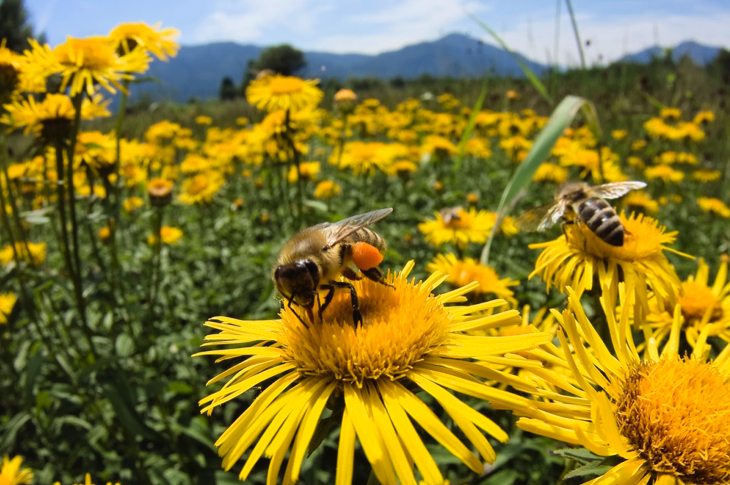EPA grants bee-killing pesticide ’emergency’ approval; a ‘routine abuse of emergency exemptions’
“The EPA is routinely misusing the ’emergency’ process to get sulfoxaflor approved because it’s too toxic to make it through normal pesticide reviews.”
The EPA’s Office of the Inspector General recently released a report that the EPA, under the Trump administration’s authority, approved the use of sulfoxaflor – an insecticide the considered to be “very highly toxic” to bees – across 16 million acres of crops known to attract bees. The “emergency” approval in 2018 was granted in 18 states to be used on cotton and sorghum crops.
While a new study found that “more than 41 percent of the world’s insect species are on the fast track to extinction, a “serious reduction in pesticide usage” is “key to preventing their extinction,” EcoWatch reported.
“The EPA is far too eager to find loopholes to approve harmful pesticides when it should be focusing on keeping people and wildlife safe from those pesticides,” Nathan Donley, a senior scientist with the Center for Biological Diversity, said. “The routine abuse of emergency exemptions has to stop.”
The Inspector General found that the EPA routinely grants “emergency” approval for pesticides to be sprayed across millions of acres, but has yet to measure the risk this has to human health and the environment.
The Center for Biological Diversity’s report exposes the misuse of emergency exemptions for sulfoxaflor and showed “at least 78 emergency exceptions have been granted” for this pesticide within the past six years on cotton and sorghum crops.
“FOR YEARS THE U.S. ENVIRONMENTAL PROTECTION AGENCY HAS ROUTINELY ISSUED “EMERGENCY” EXEMPTIONS FOR THE USE OF CERTAIN PESTICIDES ACROSS MILLIONS OF ACRES IN THE UNITED STATES, IN WAYS THAT ARE KNOWN TO BE HARMFUL TO WILDLIFE AND IN CASES WHERE THE POTENTIAL HARMFUL EFFECTS HAVEN’T BEEN PROPERLY INVESTIGATED. THESE EXEMPTIONS ALLOW PESTICIDE MANUFACTURERS TO BYPASS THE ESTABLISHED PESTICIDE-APPROVAL PROCESS INTENDED TO PROTECT PEOPLE, WILDLIFE AND THE ENVIRONMENT.”
While the EPA is allowed to grant approval for certain pesticide use in order to “prevent the spread of an unexpected outbreak of crop-damaging insects,” EcoWatch reported, The Center for Biological Diversity recommends the EPA “only grant emergency exemptions for a true emergency on a temporary basis and not as a way of continually insulating growers from the normal risks of agriculture,” the report stated.
“IF A PESTICIDE CANNOT GAIN APPROVAL UNDER THE NORMAL PESTICIDE-APPROVAL PROCESS, THEN AGRICULTURAL PRACTICES MUST CHANGE TO REFLECT THAT REALITY.”
In 2018, federal register notices revealed that sulfoxaflor was approved on an “emergency” basis across 16.2 million acres of cotton and sorghum crops in the following states: Alabama, Arizona, Arkansas, California, Colorado, Georgia, Illinois, Kansas, Louisiana, Missouri, Mississippi, North Carolina, New Mexico, Oklahoma, South Carolina, Tennessee, Texas and Virginia.
A study concluded that even lo does of sulfoxaflor has severe consequences on bumblebee reproduction and could lead to the species extinction.
“Spraying 16 million acres of bee-attractive crops with a bee-killing pesticide in a time of global insect decline is beyond the pale, even for the Trump administration,” Donley said. “The EPA is routinely misusing the ’emergency’ process to get sulfoxaflor approved because it’s too toxic to make it through normal pesticide reviews.”

